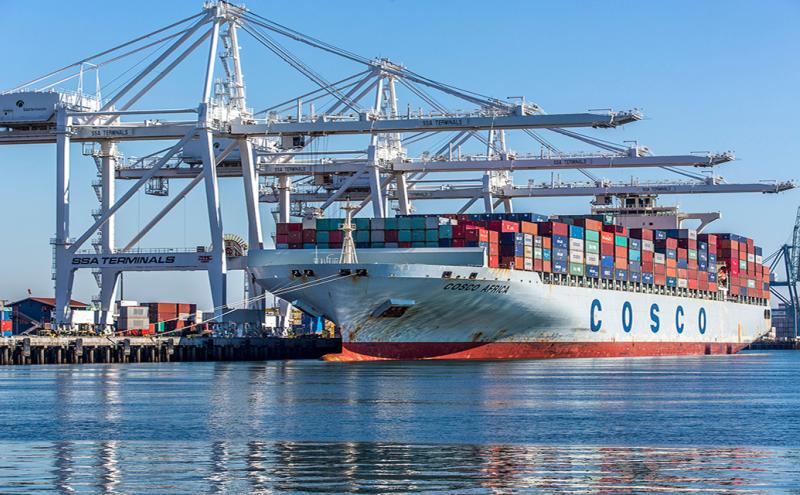
After clicking “purchase” on your online order, have you ever thought about how it will get to you? Most likely by container ship, as 80 to 90 percent of the world’s goods are transported by water. Because our growing global society means increasing demand for capacity, the size of container ships has doubled over the last two decades. In order to remain competitive, worldwide ports and shipping infrastructure must evolve as well.
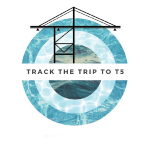 On Sunday, June 13, four large, Super-Post Panamax Cranes will enter Elliott Bay in Seattle. It’s a historic event, and you can join in by:
On Sunday, June 13, four large, Super-Post Panamax Cranes will enter Elliott Bay in Seattle. It’s a historic event, and you can join in by:
- Watching the livestream on the Port's Facebook page
- Tracking the cranes across the Pacific Ocean
- Monitoring the Port’s Twitter feed or #TracktheTriptoT5
- Visiting these vantage points around Puget Sound and Elliott Bay
- Sharing your photos of the cranes
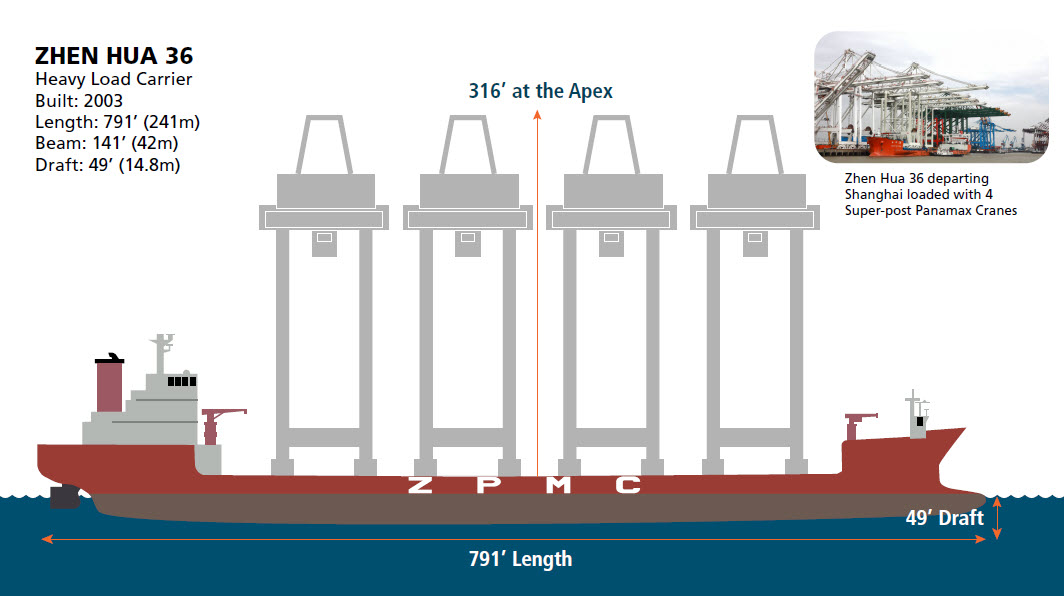
And here's all you need to know about why it's important to our region and its economy.
Ships are getting larger
The 1914-era Panama Canal couldn’t keep up with the larger ships. So in 2016, a third and significantly bigger lock was completed, doubling the capacity of the Panama Canal. According to the Panama Canal Authority, 96% of the world’s vessels can travel through the Panama Canal after the expansion.
First, a quick glossary of terms:
- TEU means Twenty-foot Equivalent, a globally standard shipping container. Read all about it in a previous blog.
- A Panamax ship would fit in the original locks; these size standards were written in 1914
- Neo-Panamax ships fit exactly into the new larger locks commissioned in 2016
- Post-Panamax and Super Post-Panamax ships are too big to transit the old or new locks of the Canal and must go the long way
Here’s a handy reference to ship sizes from Wikipedia:
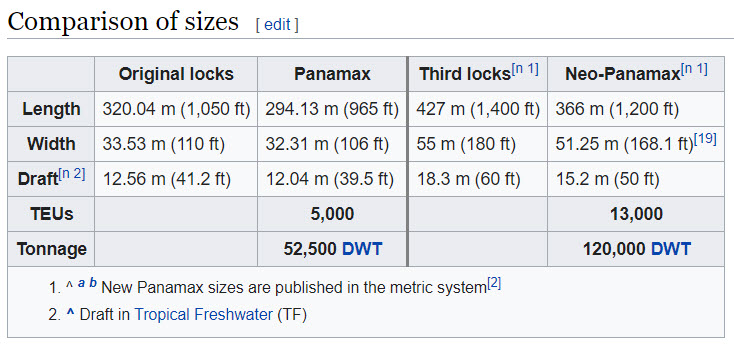
- Check out the Ultimate Guide to Ship Sizes from MarineInsight.com
Fact 1: The new larger ships can carry millions of bananas
The largest ship to transit the new Panama Canal since its expansion is the Neo-Panamax Triton, owned by the Greek shipping company Costamare. The container ship is 168 feet wide; and 1,211 feet long with a draft/ hull depth of 52 feet. And a cargo capacity of 14,424 TEUs.
According to Costamare, one TEU can hold 48,000 bananas. Just for illustration, the Triton could theoretically hold 692,352,000 bananas, hopefully not all ripe at once.
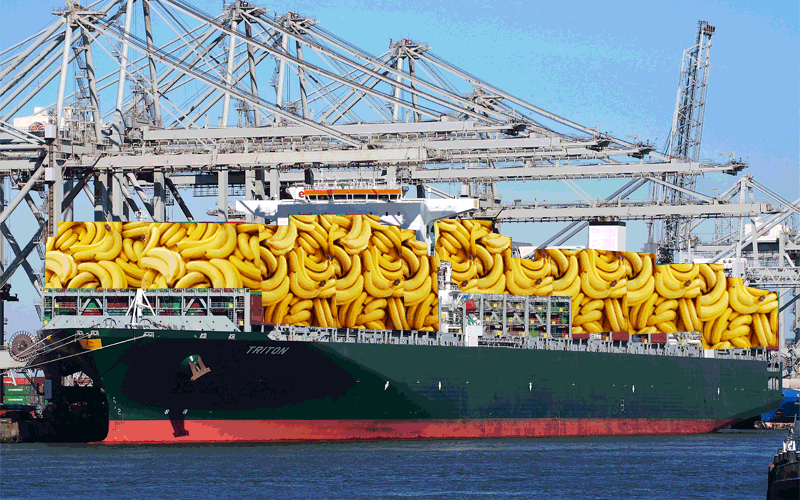
Watch this video of the Triton in the Panama Canal:
Supporting infrastructure must also grow
If the Port wants to remain competitive with other ports around the world, infrastructure updates are required to serve these new ships at the North and South Harbor terminals managed by the Northwest Seaport Alliance (NWSA). Larger ships require a deep draft harbor and bigger cranes to unload the cargo that fuels the economy of our region. Terminal 5, at the mouth of the Duwamish River in Seattle, will get new cranes as part of a modernization effort that began in 2018. In a joint effort with terminal operator SSA Marine, the Northwest Seaport Alliance will welcome these cranes to the Seattle Harbor in mid-June. When Terminal 5 is complete, it will be able to handle the largest container vessels in the world.
Fact 2: The Terminal 5 cranes will be among the largest cranes on the West Coast
The largest cranes are at the Port of Oakland, installed in January 2021. Here are the dimensions of the new cranes coming to Seattle:
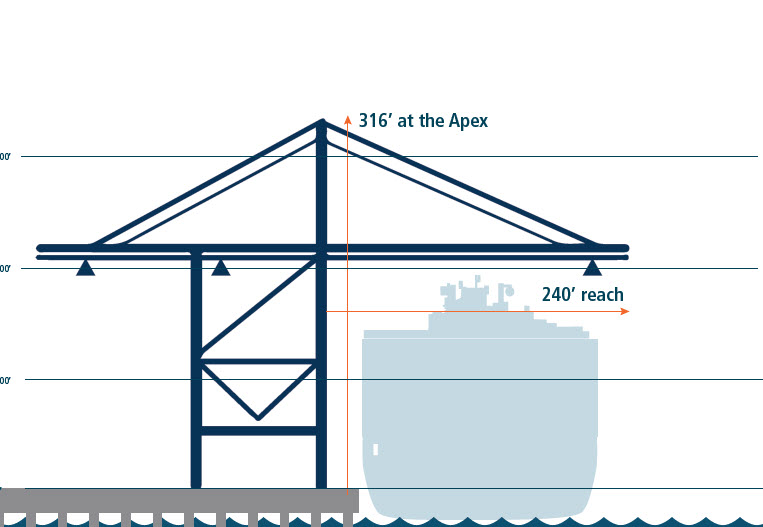
Fact 3: The cranes are almost twice the height of the Seattle Great Wheel
Standing at 316 feet, these cranes are:
- As tall as London’s Big Ben clock tower
- Twice as tall as Seattle’s Great Wheel
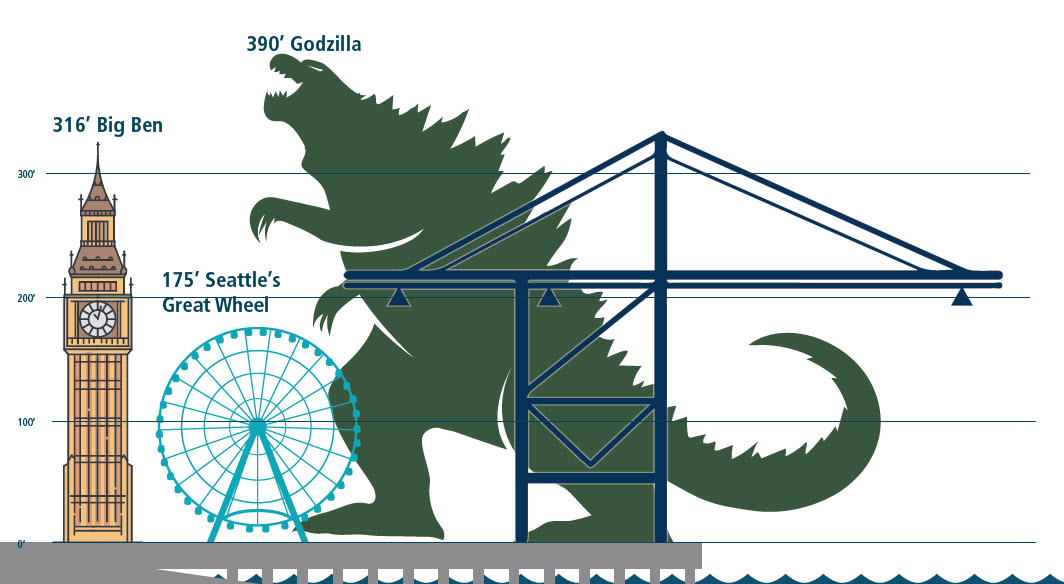
Fact 4: The crane “arms” extend longer than an NHL arena
When unloading large container vessels, these cranes drop their arm and reach 240 feet across the waterway. That’s longer than an NHL hockey arena. And almost like running from one end of Lumen Field to the other. .... Phew. Give us a minute to catch our breath.

Fact 5: Each crane could lift a whale!
The lifting capacity for each crane is 100 tons, which is about 200,000 pounds! That means the cranes are strong enough to pick up:
- A petite blue whale, the largest animal on earth (But we love them, so no whales were harmed in the making of this blog)
- 14 school busses (yes at the same time and without children in them)
- The Space Shuttle Endeavor
- A locomotive engine
- A Boeing 757-200 airplane
Source: Weightofstuff.com
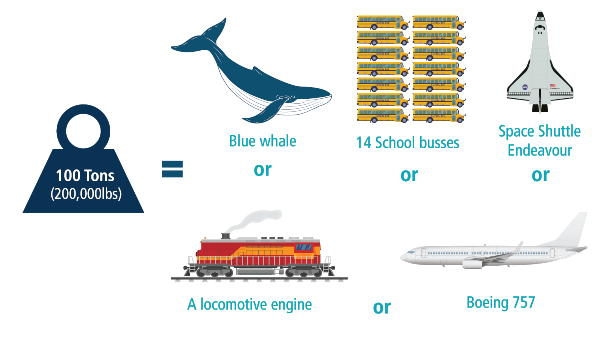
I want to see the cranes!
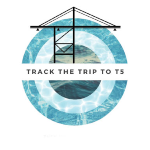 This week, four large, Super Post-Panamax Cranes are making their way across the Pacific Ocean to their new home at Terminal 5 in Seattle It's a historic event, so here's how to see their arrival in Elliott Bay on June 13. Here's how:
This week, four large, Super Post-Panamax Cranes are making their way across the Pacific Ocean to their new home at Terminal 5 in Seattle It's a historic event, so here's how to see their arrival in Elliott Bay on June 13. Here's how:
May 23
The cranes left Shanghai to begin their trip to Seattle.
- Track their progress across the Pacific Ocean
Mid-June: Entering Puget Sound
The four massive cranes on top of a ship will be visible as they sail through Puget Sound into Elliott Bay.
- Watch the Port’s Twitter feed for arrival information or #TracktheTriptoT5
NWSA Arrival (June 13)
- Watch the Port's Facebook page
- The Port’s Jack Block Park in West Seattle should be a great place to watch them arrive. Take a look at other locations near Elliott Bay
- Check the map for other viewing locations around Puget Sound
- Share your photos of the cranes
Top Photo: All eight new cranes work two ships for the first time at Husky Terminal in Tacoma Jan. 26, 2020.

